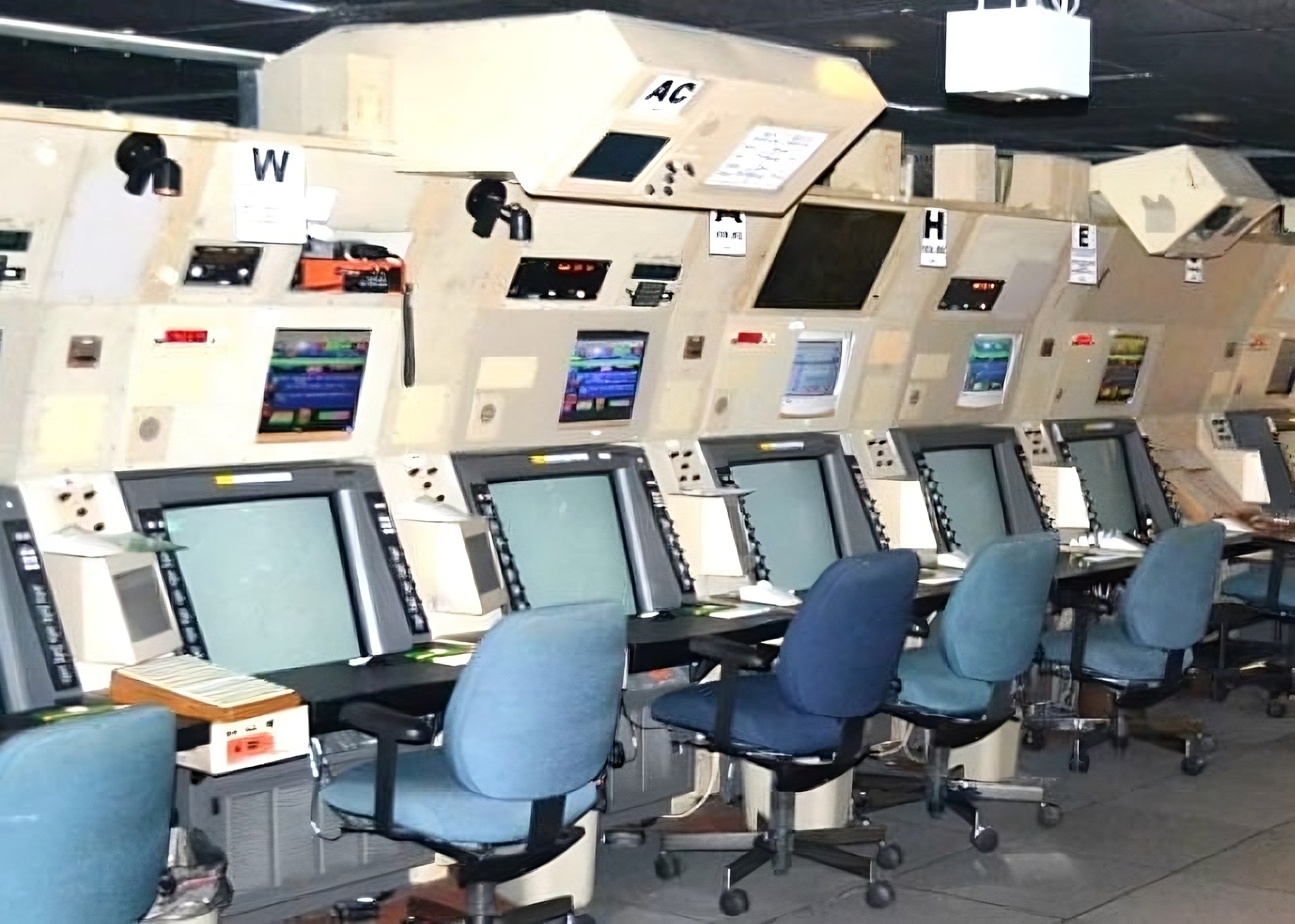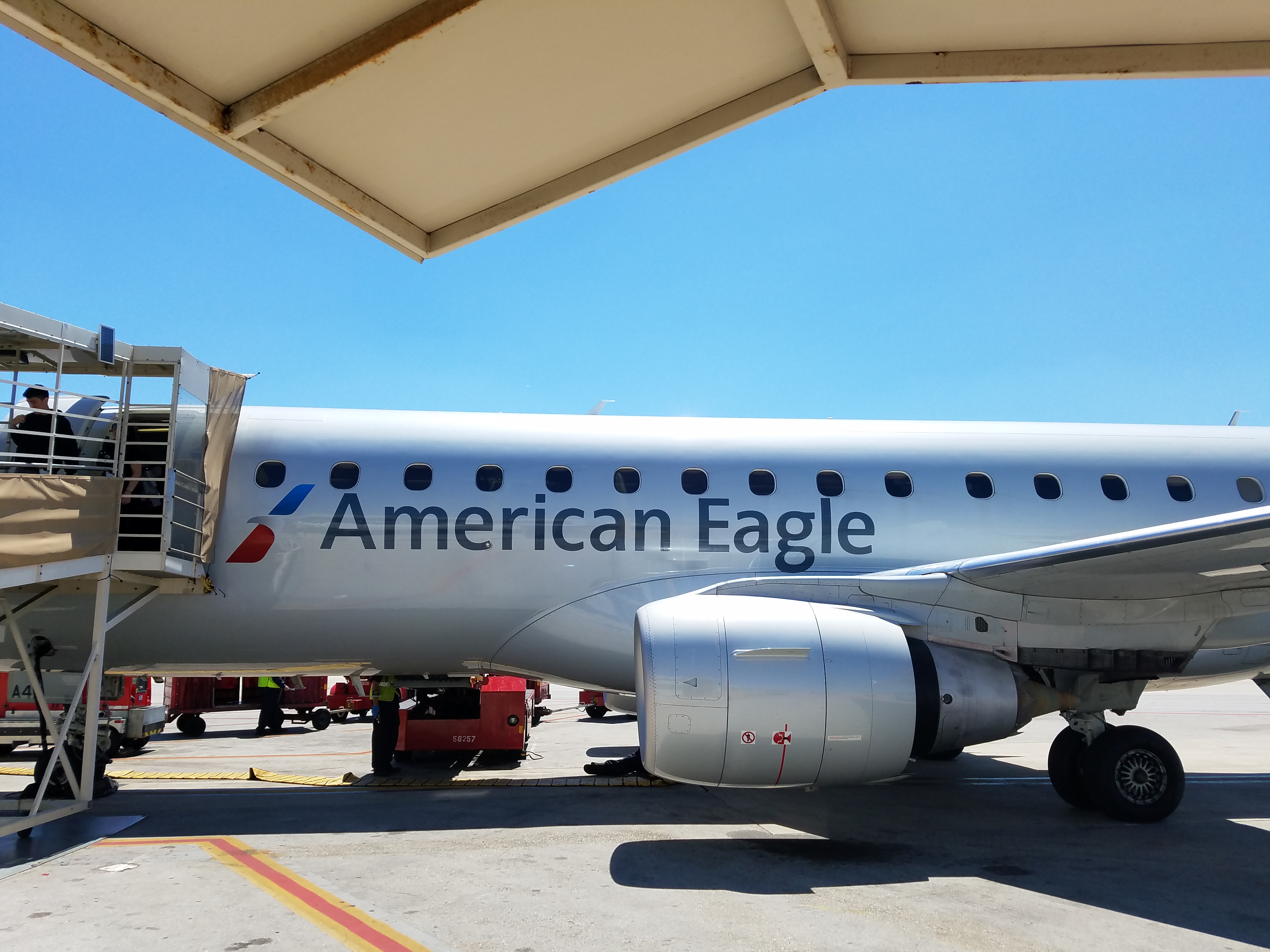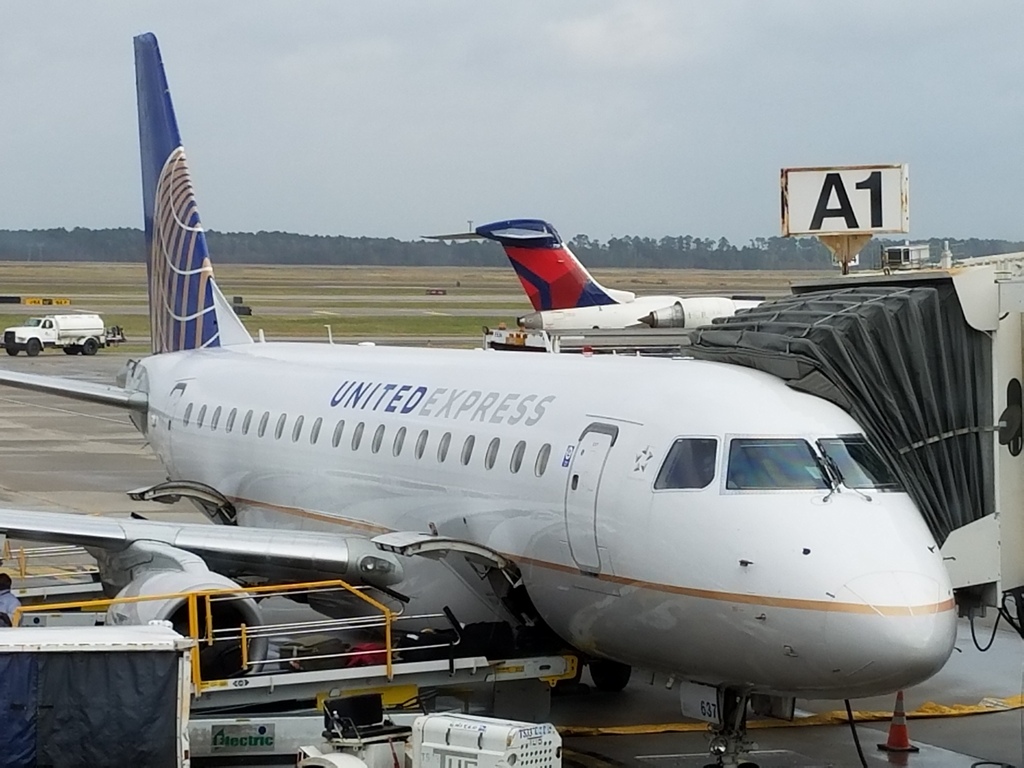Shortly before 11:00 p.m. local on Sunday, Sept 7, 2025, two American Airlines regional jets came within 300 feet of each other on on approach to Greensboro/Piedmont Triad airport.
- American Eagle AA3754 (an Embraer 175 operated by Envoy Air) from Miami (“Envoy 3754”)
United Express UA5503 (an Embraer 175 operated by SkyWest) from Denver (“SkyWest 5503”)
Video from VASAviation shows an air traffic controller sequencing both jets to land on runway 5R. SkyWest is given speed control (first 210 knots and then 170 knots) and cleared approach, including “cross COSIS at or above 3,000.”

Envoy reports the runway in sight and is cleared visual 5R with “keep it as fast as you can as long as you can,” then switched to tower on 119.1.
A few miles later, the controller asks SkyWest if they have Envoy in sight and tells them to follow that traffic but adds “if you can’t, I’ll break you out.” A conflict alert sounds on the radar. SkyWest requests a breakout and is immediately turned away and climbed. The two jets were vertically just 300 feet part at the closest point.
In terminal radar operations, controllers must normally keep 3 nautical miles of separation during the “turn‑on” to final. A near midair collision is proximity of less than 500 ft or any time a pilot reports a collision hazard. Lateral separation was 2 miles. It was a loss of safety margin that triggered a conflict alert requiring prompt action.
- Approach control is feeding both Embraer 175s to runway 5R. Envoy is outside the airport, gets “field in sight,” and is cleared visual with “keep it fast…,” then sent to tower 119.1. SkyWest is on the RNAV (GPS) 5R and told to slow to 170 and cross COSIS ≥3,000.
- From well outside 10 nautical miles you can already see the closure will be tight if Envoy slows/turns slightly wide and SkyWest doesn’t get more spacing.
- “Follow that traffic.” The controller asks SkyWest if they have Envoy in sight and says to follow them — but SkyWest had been cleared RNAV 5R, not a visual. The controller doesn’t clearly switch them to a visual approach nor issue the standard “maintain visual separation” call.
- The radar conflict alert tone fires. SkyWest quickly requests a break‑out; the controller turns and climbs them, re‑sequences, and the arrivals are spaced out.

2.5 mile finals are often permissible but aren’t used frequently at non-hub airports. They’d be used only when quipment, weather, fleet mix, runway exits, and staffing line up — and when the demand curve justifies squeezing in those extra arrivals.
Primary responsibility here sits with approach control. They owned sequencing until both airplanes were safely established with proper separation or visual separation applied.
The biggest issue here is the controller asks SkyWest if they have Envoy in sight and saying to follow that traffic — but never explicitly switches SkyWest to a visual approach or instructing them to maintain visual separation. The controller still owns radar separation.
The correct play appears to have been to keep SkyWest #1 on a straight‑in and turn Envoy #2 to follow with speed control — or widen Envoy’s base before sending them to tower. Instead, the controller tried to keep Envoy ahead with “keep it fast.”

Telling an aircraft already cleared an RNAV to “follow that traffic” without a clean visual‑approach clearance and “maintain visual separation” instruction is not standard. If visual separation isn’t in force, the controller must maintain radar separation — and when the conflict alert fired, immediate action is required (which occurred.. late).
It seems obvious looking at this from the outside, but why try to squeeze Greensboro like it’s New York LaGuardia? Ultimately nobody is in that big a hurry to make it to Greensboro. The safety margin here was burned away for no good reason at a non‑congested airport. The conflict alert did its job; so did SkyWest’s decision to bail.
(HT: One Mile at a Time)


Clickbait headline much?
Your headline is a complete lie. The planes were never closer than 2.3 miles.
@Chris — 2.3 miles?! That’s about 3x closer than that Spirit jet was to AF1! #callback
Definitely a click-bait headline. At 2.5 miles lateral and 300 feet vertical separation, I would not have to go to my Pythagorean calculations and unit conversions to be sure that they were further apart than the headline claims … acknowledging, however, that they *did* break safe separation.
Just came here to say what everyone else before me has already said.
For the math-geeks in the audience: Gary lives in Line-Land, where the universe is only a single dimension of vertical height.
@Thing 1 — Positive reinforcement.